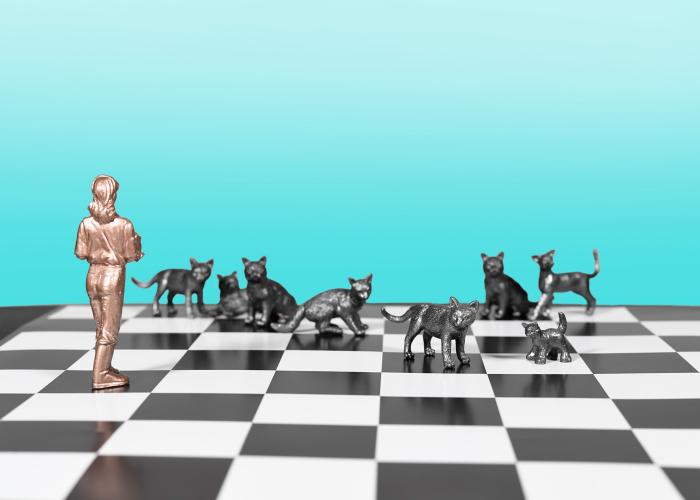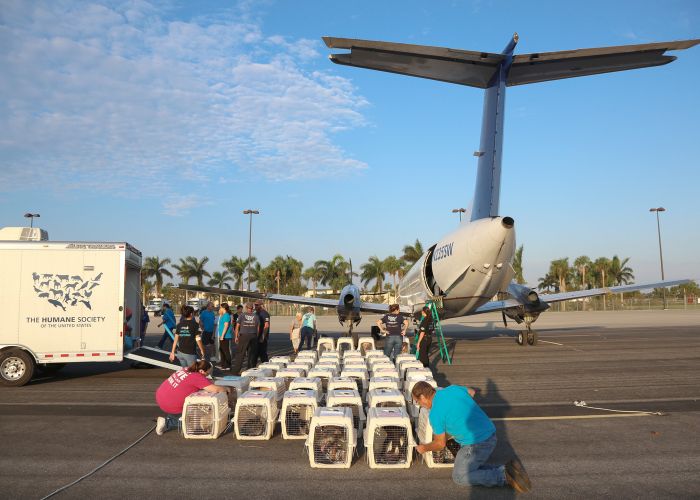Where the wild things shouldn’t be
Forcing exotic animals to suffer as pets endangers their well-being—and the safety of the people around them
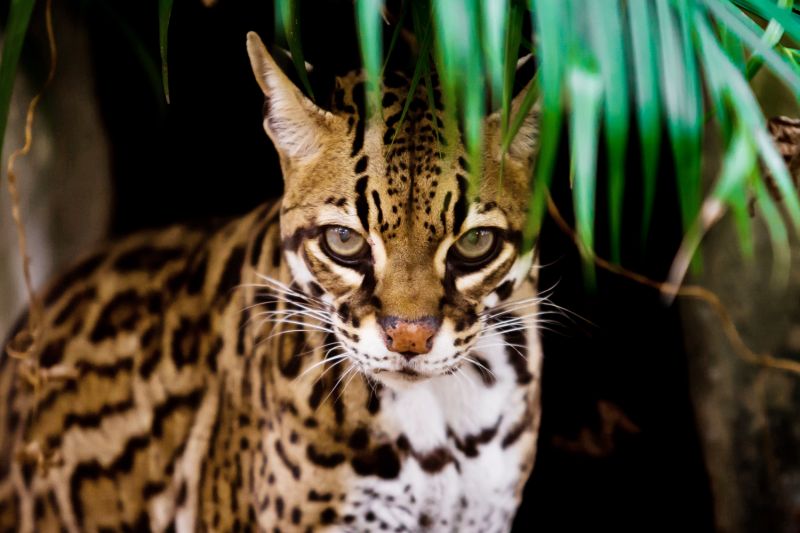
If you had driven by the idyllic-looking home in the suburbs near Albany, N.Y., you would have never known that six African exotic cats had, for more than a decade, been living in the dark basement.
In the wild, servals, often referred to as reed cats, typically live near water. The largely solitary animals roam vast tracts of land and can jump 12 feet straight up into the air. They fish for meals by knocking their prey unconscious with their strong, precise paws.
Yet there were these six, 40-pound servals living virtually on top of each other in an 8-by-12-foot cage—no bigger than a small shed—with a concrete floor, a drain, two litter boxes and a few shelves on the wall. The homemade enclosure had been built to prevent the cats from spraying all over the basement. The owner let them out when people visited.
All of the cats had been declawed. One female named Zouletta had a permanently damaged ear, likely due to disputes that arose from six cats living in such close quarters. They were also grossly overweight, “like whales on little stick legs,” remembers Carole Baskin, director of Big Cat Rescue in Tampa, Fla. The sanctuary agreed to take the servals in 2011 after being called by the owner, who had fallen ill and was losing her home to foreclosure.
Many exotic cat owners feed their animals foods that are high in fat but low in nutritional value. Coupled with the lack of exercise from living in tiny enclosures and the discomfort from walking on concrete, especially if they’ve been declawed, these animals typically live only 10 to 12 years. “Here [at Big Cat Rescue], they live into their late teens and twenties,” Baskin says.
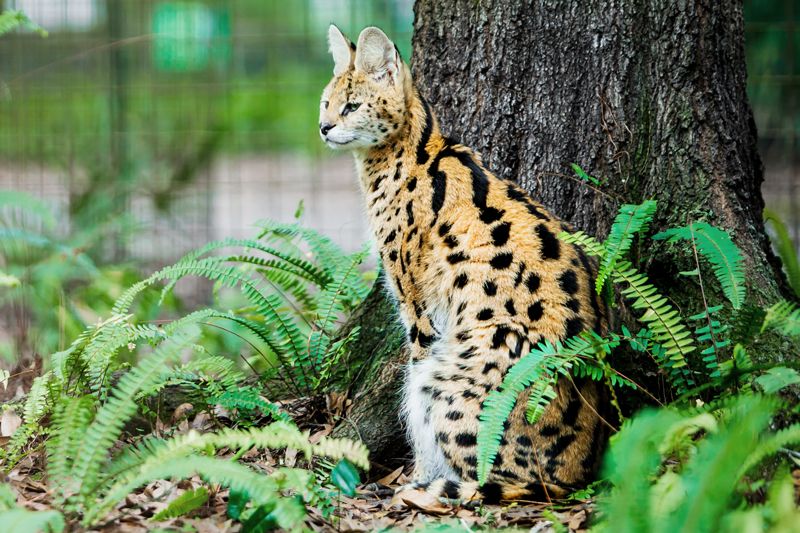
Five of the servals had been bought as kittens from a now-closed pet store in Latham, N.Y., when it was still legal in the state to buy exotic cats as pets. Doodles, the sixth cat, came from a man in Florida who didn’t want him anymore. The servals had been grandfathered in since the owner had purchased them before a 2005 statewide ban on the private possession of big cats and other exotic animals. One of the servals died before making it to sanctuary, and an elderly male recently died. The remaining four live in 1,200-square-foot outdoor enclosures filled with climbing structures, toys and cozy dens. The staff also takes transportable pools around to their enclosures for water play.
Even with the vast improvements, one of the servals still licks himself to the point where he leaves gaping holes in his fur. “It’s a stereotypical behavior he likely developed at a young age,” Baskin says, “probably because there was nothing else for him to do.”
Baskin and her sanctuary staff are on the front lines of a battle against a national phenomenon that is disturbingly widespread: the private ownership of exotic animals. All across the U.S., servals, lions, tigers, cougars, chimps, monkeys and other animals languish in basements, garages and small outdoor enclosures, straddling the boundary between wild animal and family pet, their emotional and biological needs unmet.
The animals are being captive-bred in roadside zoos and even people’s backyards, says Nicole Paquette, HSUS vice president of wildlife protection. “Some are sold in pet stores. Others are sold at one of about a dozen federally licensed animal auctions across the country or online.” Or, like in the case of the Florida man who didn’t want his serval anymore, the animals are traded back and forth between private owners.
Laws are mostly lax, and in many states possession is perfectly legal.

Big cats are among the victims of the exotic pet trade. An estimated 5,000 to 7,000 tigers live in the U.S., mostly at unaccredited breeding facilities, poorly run roadside zoos, traveling zoos, pseudo-sanctuaries and private menageries, in conditions ranging from barely adequate to squalid. In Texas alone, more tigers may live in captivity than in the wild worldwide (though we can’t be sure because Texas, among other states, does not require a strict accounting of its exotic animals-in-residence).
Every so often, news stories shocking enough to make international headlines surface from this rarely seen underground. Recall, for example, the nightmare of Zanesville, Ohio, on Oct. 19, 2011. What became known as the “Zanesville Animal Massacre” was a horrific scene of cruelty and carnage, as 56 animals—including lions, bears, wolves, tigers and primates—were released from an unlicensed private menagerie by their owner. Most were killed by local law enforcement officials, including 17 lions and 18 tigers. The animals’ owner killed himself. For years the local sheriff had expressed concern about unsafe caging and poor conditions at the facility, but without any exotic pet restrictions in Ohio there was little he could do at the time.
Events such as Zanesville are both tragic and acute. The world gasps at the horror but then soon forgets it happened, even though the problem of keeping exotic pets goes beyond sporadic episodes of grim violence. Often the horror stories are restricted to local media outlets, if they are reported at all—even though incidences of abuse and neglect are constant and ubiquitous.
“It’s a public safety threat, a public health threat, and of course it’s bad for the animals: So many are not even provided adequate care,” says Paquette.
Twenty years ago, Baskin herself bred and sold exotic cats in Florida. She had her “road to Damascus” moment at a wild animal auction in 1995. “I recognized one of the lynx being sold as one we had previously owned,” she says. “He was one of the rescued fur-farm kittens that we placed in a pet home. I told everyone that if their kitten didn’t work out to bring them back. Most did, but this cat somehow ended up at an auction where taxidermists were likely to end up with him.
“We brought him home that day,” she says, “but it was one of those moments where the light came on in my head and [I] said, ‘Others are not committed to lifetime care of these cats, so you can’t trust people who say they will always love the animal.’”
And therein lies the paradox of exotic pet ownership: Our desire to keep these animals close eclipses our capacity to give them a life without suffering—and to keep our communities safe.

If anyone knows the dangers posed by exotic pets, it is Charla Nash. In 2009, the Stamford, Conn., resident was mauled by her friend’s pet chimpanzee, Travis, who starred in commercials. The 200-pound, 14-year-old chimp unexpectedly turned on Nash, inflicting horrendous injuries. She lost her hands, nose, lips and eyes and underwent a full face transplant. Travis, meanwhile, was shot to death by police responding to the 911 call—a typical outcome when wild animals go wild.
“I want everyone out there that either has a primate or knows someone who has a primate to know they are very dangerous, infectious animals,” Nash said in a 2014 interview with The HSUS. “As cute as they are, they are going to hurt someone.”
Nash, who spoke before Congress in favor of legislation to restrict exotic pet ownership, added that the chimps themselves are also victims. “Not only is it unhealthy for the owner and a neighbor, but the animal itself is suffering. I’ve seen it with my own eyes, when I could see: Travis used to sit on the floor in a corner and rock,” she said. “Now that is not a happy, healthy chimpanzee. Another thing I noticed: His coat was dull, his skin was flaky, he had sores on his face, he had large knuckles from hitting the cage.”
Nash’s harrowing experience was extreme, but mishaps involving exotic pets happen regularly. The HSUS and other groups have databases of such incidents that read like a perverse, interspecies national police blotter. In Bryant, Ark., a Target customer’s pet marmoset bit an employee; in Elkhart, Texas, a pet lemur bit a patron at a consignment shop; in Muskogee, Okla., a pet zebra bit off a man’s nipple. A troubling trend in recent years is people keeping venomous snakes as pets. Just ask the Florida woman who discovered a neighbor’s escaped King cobra hissing at her from behind a dryer in her garage, or the residents of an upscale apartment building in Texas who encountered a cobra in the middle of a hallway on the third floor, or the Georgia woman who spotted a 4-foot African Gaboon viper slithering along the street.
The HSUS has tracked more than 1,700 dangerous incidents since 1990 involving big cats, bears, primates, elephants, large constrictor snakes and other exotic animals, resulting in scores of deaths and hundreds of injuries. The animals are victims, too, with nearly 300 killed as a result of escapes and attacks.
Exotic pet ownership can also endanger human health in more invisible ways. Most emerging diseases are zoonotic, meaning they spread from animals to humans. The Centers for Disease Control and Prevention has noted the spread of monkeypox from pet prairie dogs, lyssaviruses from pet bats, the parasite Baylisascaris procyonis from pet kinkajous, and ringworm infections from African pygmy hedgehogs and chinchillas. And it has tracked the spread of salmonella infections that humans—especially young children—contract by handling reptiles; roughly 7 percent of all salmonella infections in humans are attributed to such contact.
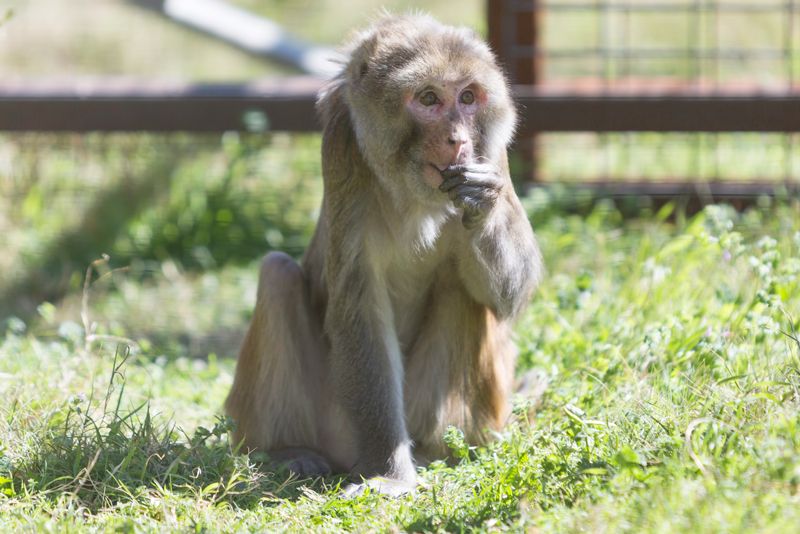
The path to exotic pet ownership often starts with an irresistible attraction to unbearably cute young wild animals. As pets, the babies become quasi-“socialized” and dependent on human caretakers—until they grow up and instincts replace dependence.
During puberty, destructive behaviors emerge without provocation or warning, and the one-time cuties become unwanted pets. Most end up euthanized, are cycled back into the trade or released into the wild, where their chances of survival are slim (and where they can harm the local ecosystem), or are simply left to languish in neglected and isolated conditions, locked away in a cage in the basement or garage.
“The general story you hear consistently is that people see a cute young animal,” says Ben Callison, former HSUS integration and engagement director for animal response, care and sanctuary. “They get the pet as a juvenile generally, and they run into trouble when the animal becomes sexually mature. For primates, that’s always the story. They can’t handle them anymore, and the owner ends up getting bit or hit.”
Jonas, an elderly rhesus macaque, came to Black Beauty Ranch, a Texas sanctuary operated by HSUS affiliate The Fund for Animals, after living chained to a tree for 25 years. He’d been at a roadside zoo in Louisiana his first four years. But as he reached sexual maturity, he began getting rough with visitors. He ended up in someone’s backyard with a leather collar around his neck, attached to 100 feet of chain that had been secured to a tree. He lived a solitary existence, Callison says, though the owners said their dogs would sometimes visit him. Macaques are popular in the pet trade, despite the fact that most carry the Herpes B virus, which is often deadly to humans.
Sanctuary staff hoped Jonas’ years of living alone would not hinder his chance for companionship. “We didn’t know if he would be able to integrate with another macaque,” Callison says. He was placed in an enclosure with a female macaque named Sunshine, who’d recently lost her companion. The staff watched tentatively as the two went to their respective corners. Slowly, over the next few days, they began to approach each other. Now, they are inseparable.
Jonas’ transition was smoother than most. “Generally the animals have no social skills of how to be with their own species,” Callison says. “It takes a lot longer for an animal who came from the pet trade than other rescues to be comfortable with other animals. The longer the time they are isolated like that, the harder it is.”
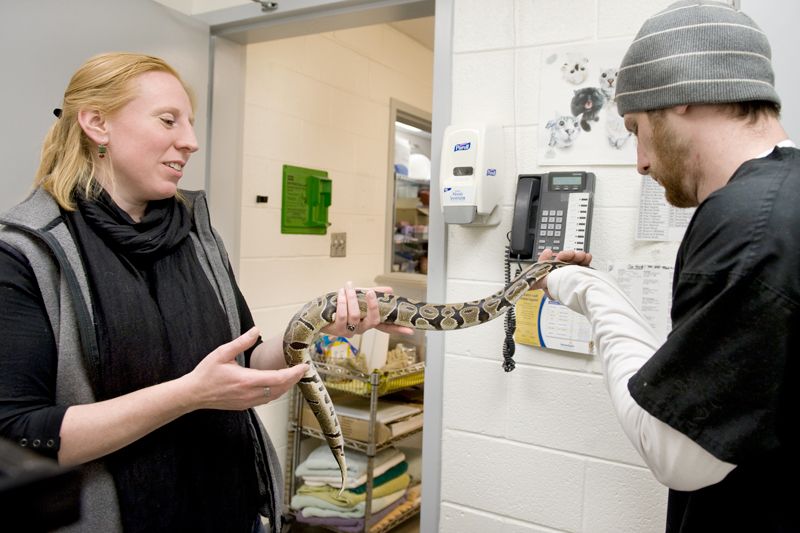
What drives so many Americans to acquire creatures who need huge living spaces, expensive diets such as large quantities of raw meat, and care from specially trained veterinary professionals—animals who often outweigh us by hundreds of pounds, with teeth that can tear flesh and muscles that can wrestle us to the ground?
For some, it’s the desire by otherwise ordinary people to find ways to impress others by acquiring something big, bad, dangerous or unique. Infant primates are sometimes purchased by empty-nesters as surrogate children. And with others, it starts with a misplaced love of animals: We marvel at their exotic beauty and aren’t content to simply admire from afar. In our human hubris, we also overestimate our capacity to tame, and we assume big cats are simply a larger version of the domesticated felines who purr in our laps, rub our faces and share our beds. “We hear some folks say things like, ‘I have this bond with my cougar. I sleep with the cougar, and he would be devastated if I wasn’t there,’” says Paquette. “But just because you think you have this bond doesn’t mean the animal’s natural instincts won’t come out.”
Consumers are often parents buying for their children what they saw on TV or in the movies. One example: The Owl & Monkey Haven, a sanctuary on the Isle of Wight in England, has taken in a number of unwanted snowy owls purchased as chicks for young Harry Potter fans. In the early ’90s, when a character on the sitcom Friends acquired a pet capuchin, “everybody wanted a capuchin,” says Callison.
Even not-so-exotic animals such as turtles have suffered escalating popularity in the pet world after making their splash on the big screen. Oftentimes the children quickly learn that turtles aren’t really ninjas and lose interest.
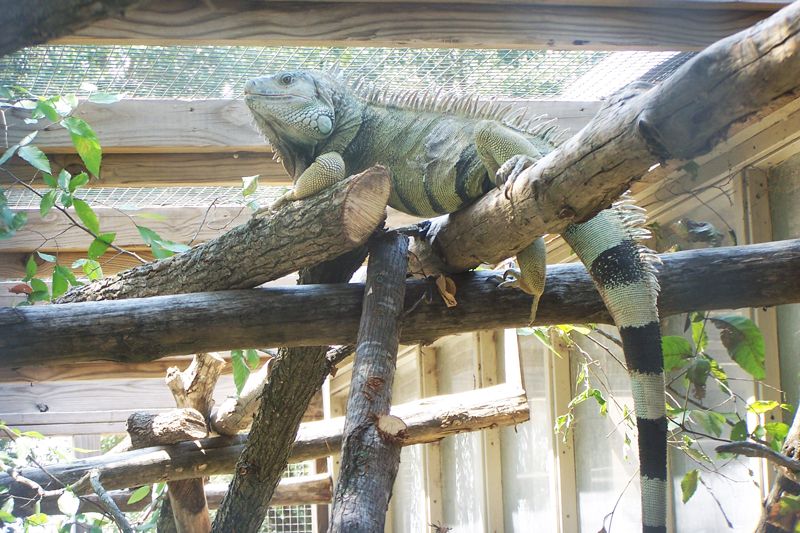
Placement at accredited sanctuaries is the best possible outcome for victims of the exotic pet trade. But sanctuaries aren’t the ultimate solution; there will never be enough to stem the tide. “The reality is, we turn away animals because of the sheer volume of animals in the pet trade,” says Callison. “We can’t rescue our way out of this issue. Sadly, so many of us are saturated. If we just opened our doors, the flood would overwhelm us.”
The answer, quite simply, lies in passing and enforcing laws against the breeding, possession and sale of wild pets by private owners. Local governments are increasingly heeding this call. Macomb County in Michigan recently banned the sale of exotic pets. Caroline County in Virginia banned ownership. Missoula, Mont., has banned commercial displays of exotics.
The HSUS is at the forefront of pushing legislative change. At the federal level, the U.S. Fish and Wildlife Service recently finalized HSUS-championed rules that will list all chimpanzees under the Endangered Species Act, prohibiting their use in the exotic pet trade. And The HSUS is working on state legislation to prohibit possession and breeding of dangerous wild animals. Since 2000, the organization has helped pass 19 bills against the trade. One was in Ohio where, after the Zanesville tragedy, the legislature banned new ownership of dangerous wild animals and placed strict standards on current owners.
Today, The HSUS is focused on the five states with no restrictions at all: Alabama, Nevada, Wisconsin, North Carolina and South Carolina. In North Carolina, a bill is pending to ban the private possession of dangerous animals. And in Clark County, Nev., HSUS efforts brought the recent ban on new ownership of exotic dangerous animals. The county is the largest in Nevada, with about 2 million people.
The bills, which generally exempt accredited zoos, sanctuaries and research facilities, “cover big cats, bears, wolves, primates and dangerous reptiles,” Paquette says. “Our position is that these are wild animals who can’t be domesticated and should not be in our homes or backyards.”
That, simply stated, is the problem. It’s not a matter of will or resources; it’s that wild animals cannot be tamed. Some who purchase exotic animals hold the belief, however misguided, that they can enrich the lives of their “pets.” But in truth, the best we can do for them is to protect their natural environments and admire them from afar.
There is no better example of this than Keisha, an elderly tiger taken in by Big Cat Rescue in October from an exotic pet owner in Ohio. Her rescue came three years after the state’s exotic pet ban went into effect. She had been living with four other tigers in an outdoor enclosure about the size of a bedroom. “They were all hugely overweight,” Baskin says. “I’m talking close to 200 pounds overweight.”
When agents from the Ohio Department of Agriculture darted Keisha, she couldn’t even move. The owner told them the other cats beat her up all the time, and she couldn’t walk. “And then he claims how much he loves his cats and how he is going to fight to the end to keep them,” Baskin says. Lucky for everyone, he signed over the cats when the SWAT team arrived.
Keisha (now known as Teisha because the sanctuary already had a big cat named Keisha) is still weak in the back legs, but she is getting stronger, Baskin says. “It took her about a week to get into her pool, but once she got in she had so much fun.”
Baskin says people tell her all the time that she should go to Africa to see big cats in their natural environment. “But that would make my life even harder than it is because I know these animals belong in the wild. … It’s heartbreaking to see these intelligent animals who are never going to know freedom.”



